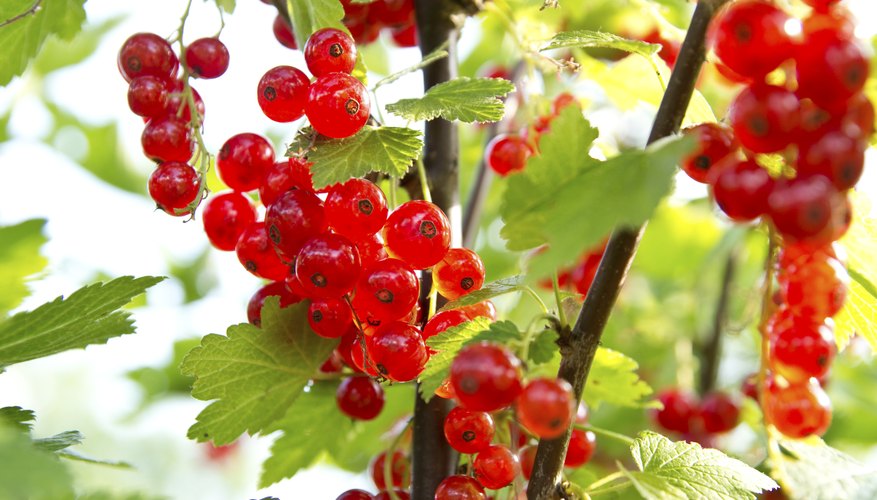Redcurrants are a favourite fruit for making jams, jellies, tarts and other sweet treats. Wild redcurrants always maintain a bright red shade. Pink, white and creame-coloured currants were developed through cultivation. In addition to being tasty, the redcurrant possesses some medicinal qualities including being antiseptic and easing indigestion. When attempting to identify currants in the wild, seek the advice of a naturalist or experienced wild food forager before consuming the fruit.
- Redcurrants are a favourite fruit for making jams, jellies, tarts and other sweet treats.
Look for a deciduous shrub that grows up to 1.5 metres (5 feet) high. Search for naturalised redcurrants in hedgerows and along ditches.
Check the foliage for single, lobed leaves that grow on alternate sides of the stem. The leaves of the redcurrant plant are a deep shade of bluish-green and are shaped a bit like a maple leaf.
Watch for drooping clumps of delicate green flowers, called a raceme or strig, in early spring. A strig is around 12.5 cm (5 inches) long and may have up to 20 flowers blooming on it at once.
Identify redcurrants by their translucent red colour and the many minute seeds inside each berry. The berries on a redcurrant strig ripen all at once, as opposed to other types of currants that ripen from the top of the strig, down.
TIP
Consult photos that will help you identify the shrub or find a description and picture of a redcurrant in a plant encyclopedia.
